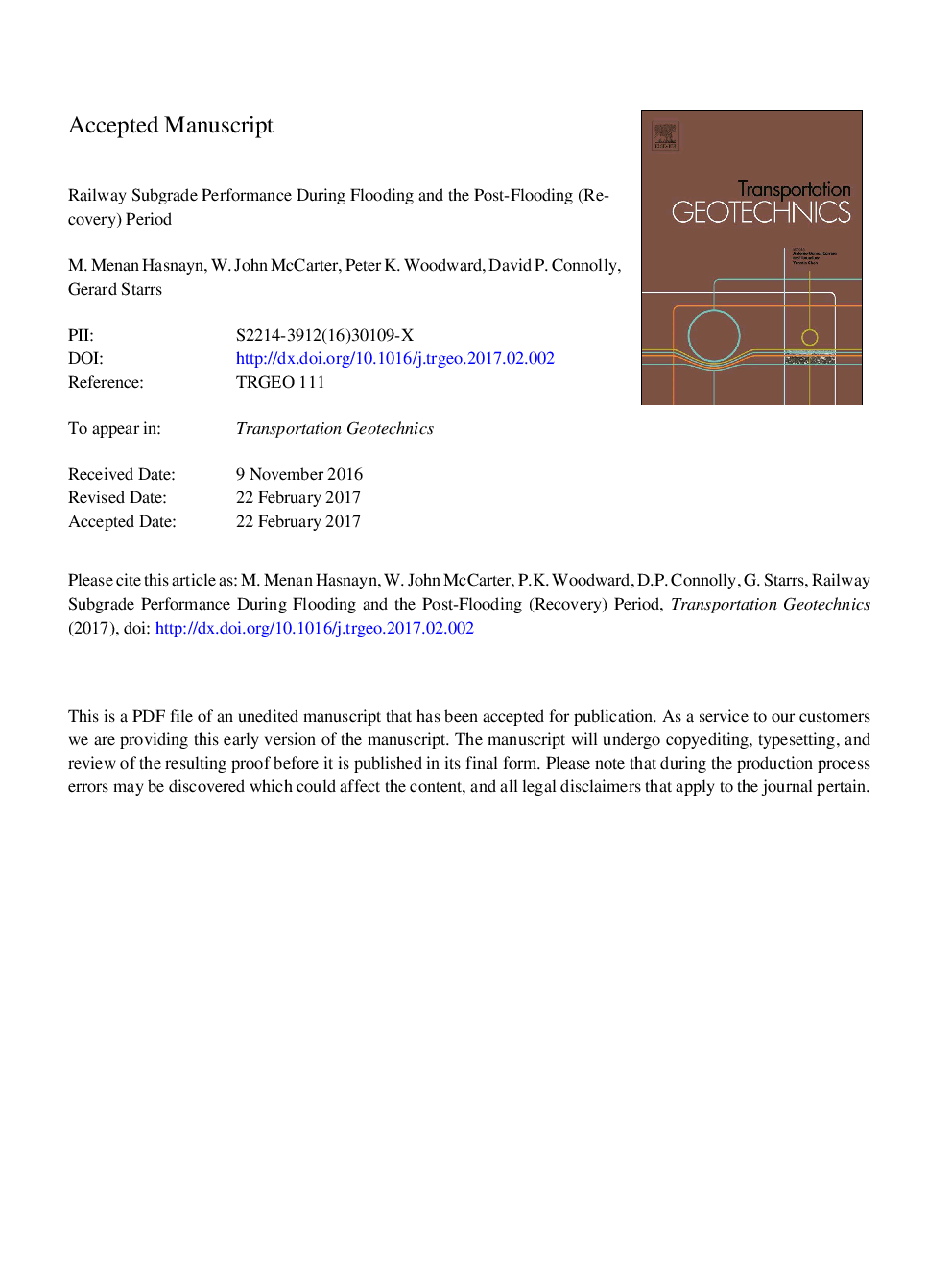| Article ID | Journal | Published Year | Pages | File Type |
|---|---|---|---|---|
| 4928782 | Transportation Geotechnics | 2017 | 41 Pages |
Abstract
Railway track is constructed on compacted soil which is, characteristically, unsaturated. The performance of the subgrade, both in the short- and long-term, is dependent on environmental factors, in particular, an increase in subgrade moisture content due to high rainfall can result in subgrade distress or shear failure under cyclic loading (i.e. train passage). Furthermore, due to varying climatic conditions, subgrade soil may fluctuate between a saturated and unsaturated condition. It is necessary, therefore, to understand such soil behaviour to ensure a safe and economical design and in the planning of maintenance work. Previous research has focused on the effect of water on the superstructure, but not the substructure. This paper outlines a full-scale testing programme to study track performance after flooding and, subsequently, during a 2, 4 and 6Â week recovery (drying) period. The study investigated the influence of soil suction on subgrade behaviour with measurements made using the filter paper technique, whilst subgrade modulus was measured using the plate load test. The results show that subgrade behaviour is influenced by changes in water content associated with soil suction; particularly, when wetted from a dry state. It is also found that tamping is less effective in the presence of wet/low-stiffness subgrade soil.
Related Topics
Physical Sciences and Engineering
Earth and Planetary Sciences
Geotechnical Engineering and Engineering Geology
Authors
M. Menan Hasnayn, W. John McCarter, Peter K. Woodward, David P. Connolly, Gerard Starrs,
